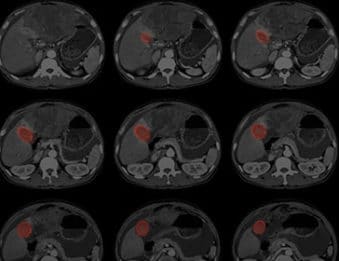Bladder Cancer Treatment
An Overview of Bladder Cancer
Properly speaking, cancer is a broad class of diseases concerned with the abnormal growth and proliferation of cells. As this abnormal cellular growth progresses, tumors may form in different parts of the body; the location of nature of these tumors determines how the cancer is described. Bladder cancer, for instance, begins when cells found in the urinary bladder begin to multiply uncontrollably. The resulting tumor may spread to other parts of the body.
Bladder Anatomy
The bladder is located within the pelvis. This hollow organ is comprised of flexible walls made of muscle; the walls expand as urine collects before being expelled through the urethra. The urine flows into the bladder through thin hollow tubes from the kidneys; called ureters. Urination occurs when the walls of the bladder contract and urine is forced into the urethra.
Talk to our Bladder Cancer Specialists
Blood in the urine is often one of the first concerns that bring people to their primary care provider or a urologist, though other urinary symptoms may be present. There is currently no standard screening for bladder cancer in people of average risk. Anyone with a higher-than-average risk should speak with a doctor promptly upon discovering any symptoms. Risk Factors Include:
- Having a history of bladder cancer
- Cigarette Smoking
- Being exposed to certain chemicals in the workplace
- Having certain bladder-related birth defects
The Types & Stages of Bladder Cancer
Making an accurate diagnosis is the first step in treatment. Part of the diagnostic process is determining the type of cancer affecting a patient and its stage. There are several different types of bladder cancer; these are among the most common.
Urothelial Carcinoma
Also called transitional cell carcinoma, this cancer is by far the most common type of bladder cancer diagnosed. Urothelial carcinoma begins in the urothelial cells that line the inside of the bladder. However, urothelial cells are found throughout the urinary tract, including in the urethra, ureters, and in the renal pelvis – where the kidney connects to the ureter. Because tumors may be present in any of these locations, the entire urinary tract needs to be checked.
Invasive & Non-Invasive Forms of Bladder Cancer
Along with describing which cells have become cancerous, the diagnostic process can also identify how far progressed the disease has become; in this case, the stage refers to how far the tumor has invaded the walls of the bladder. Two stages are described:
- Invasive – These cancers have grown into deep layers of the bladder’s muscular walls. These are harder to treat and are more likely to spread.
- Non-invasive – These cancers are still located in the thin top layers of cells, called the transitional epithelium; cancerous growth has not spread to deeper layers.
Flat & Papillary Cancers
Bladder cancer may also be described according to the growth patterns. Papillary carcinomas extend thin projections from the bladder’s inner surface towards the center. Flat cancers do not grow towards the hollow center.
Staging Bladder Cancers
Stage 0 – Tumor is confined to the lining of the bladder
Stage I – Tumor has grown into the connective tissue layer between the lining of the bladder and the muscle
Stage II – Tumor has grown into the muscle of the bladder
Stage III – Tumor has grown all the way through the muscle layer into the fatty tissue that surrounds the bladder, invaded into adjacent organs such as the prostate or vagina, or has spread into pelvic lymph nodes
Stage IV – Tumor has spread beyond the pelvis
Bladder Cancer Screening & Treatment
Bladder cancer diagnosis usually begins when a patient visits their primary cre provider or urologist concerned about blood in the urine or other urinary symptoms. People with a history of bladder cancer, with certain bladder-related birth defects, or who have a history of exposure to certain chemicals are at higher risk to develop this disease. Blood in the urine could be due to a number of different conditions, so speaking with a knowledgeable healthcare provider is important.
Beginning Treatment
Once a patient has been diagnosed with bladder cancer, they will meet with a cancer care team to discuss a treatment plan. There may be many possible treatment options to consider, so patients should take time to learn as much as possible about each choice. Each treatment option has its own spectrum of benefits and risks; these must all be considered before an option is integrated into the larger care plan. These are some of the treatment solutions that a patient may be offered:
- Surgery
- Chemotherapy
- Intravesical therapy
- Immunotherapy
- Radiation therapy
In some cases, a combination of treatment choices may offer the best solution. For instance, bladder cancer is typically treated with surgery, either alone or in combination with other forms of treatment. A surgical procedure can remove bladder tumors in the early stages. However, more advanced bladder cancers may require surgery to remove the bladder, radiation therapy or chemotherapy.
FAQ
Contact North Cascade Cancer Center Today
If you are ready to start the fight against cancer, we are here to help and support you. Give us a call at (360) 370-2873 with any questions or reach out to us at our contact page. We look forward to hearing from you and helping you overcome cancer on your way to a healthier, happier life.



